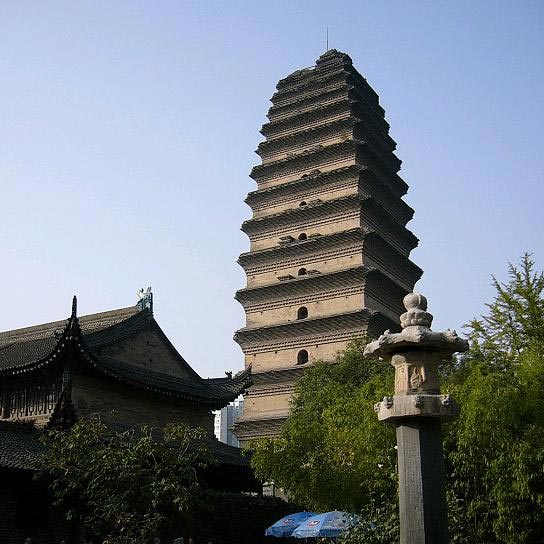 Chang’an was an ancient capital for more than ten Chinese dynasties. Also known as the famous eastern terminal of the Silk Road, it was situated in the Shaanxi province just relatively near Xi’an. Chang’an was the Chinese capital for the Han, Sui and Tang dynasty leaders. The city was first built at 200 BC by the order of then Emperor Gao Zu, and was destroyed later in AD 904.
Chang’an was an ancient capital for more than ten Chinese dynasties. Also known as the famous eastern terminal of the Silk Road, it was situated in the Shaanxi province just relatively near Xi’an. Chang’an was the Chinese capital for the Han, Sui and Tang dynasty leaders. The city was first built at 200 BC by the order of then Emperor Gao Zu, and was destroyed later in AD 904.
In classical Chinese history, Chang’an means “Perpetual Peace.” As the eastern terminal catering the Silk Road, Han Dynasty leaders (206 BC-220AD), the longest-lived and one of the most powerful rulers all over ancient China, launched explorations directed towards southeastern Asia, Central Asia, and eventually towards Rome.
With an area at approximately 84 square kilometers and enclosed with a 25.7 km long city wall and with a 6.13 m wide moat, this ancient capital prided on its striking buildings, particularly the temple of Heaven, a platform made from pounded earth with four concentric rings. Chang’an had been populated since way back the Neolithic times. This was when the Yangshao Culture managed to establish in the Banpo city suburb. Also within the immediate vicinity, the infamous Qin Shi Huang of the Qin Dynasty had held his imperial court together with his magical mausoleum protected by a massive terracotta army.
Overall, the ancient city took the form of an irregular rectangle, with the city’s main square twisted to mimic the Big Dipper for astrological reasons and at the same time to conform to the Wei riverbanks. Eight avenues divided the whole ancient city into nine districts. These nine districts in turn were further subdivided into the unusual 160 walled wards, which housed about fifty to a hundred families. History told us that this ancient capital morphed into four phases; the first (200-195 BCE) was just when the palace was built, the second (195-180 BCE) was conceived after the outer walls were erected, the third one at the capital’s peak somewhere in between 141-87 BCE, and the last one surfaced from 1BCE- 24 CE. The main gate between the city and the surrounding suburbs was the Xuanpingmen gate.
During the Han dynasty, the imperial city was located northwest of today’s modern Xi’an. Its central position is of economic and strategic importance. The roads that would lead to other places like Gansu, Szechuan, Honan, Hupei and Shanxi would all converge here. Due to the mountainous country surrounding the life-nourishing Wei River basin, only two roads go south and another two to the western mountainous Gansu. This however, would form the foundation for the ancient silk routes.
The Han capital was also regarded as the economic, political and cultural center of ancient China. As a cosmopolitan metropolis, it was also a consumer city, whose main purpose of existence was not solely patterned upon trading and manufacturing activities. Its large population tells the story. The title of political and military center in ancient China had a direct effect that boosted the population of aristocratic nature. Dominated by scholars, whose educations were supported by their wealthy aristocratic families, it became a centralized hub of civil servants for the general welfare and improvement of ancient China.
The emperor Liu Bang initially had his eyes focused on the area known in the ancient times as the center of the world, the holy city of Chengzhou, which is today’s Luoyang. This move is to emulate and assure a strong and long-lasting dynasty just like that of the Zhou. But the practicality and the very vital and strategic military value of a capital stronghold in the Wei Valley is too much to resist. This became the emperor’s deciding factor for building his new capital Chang’an.